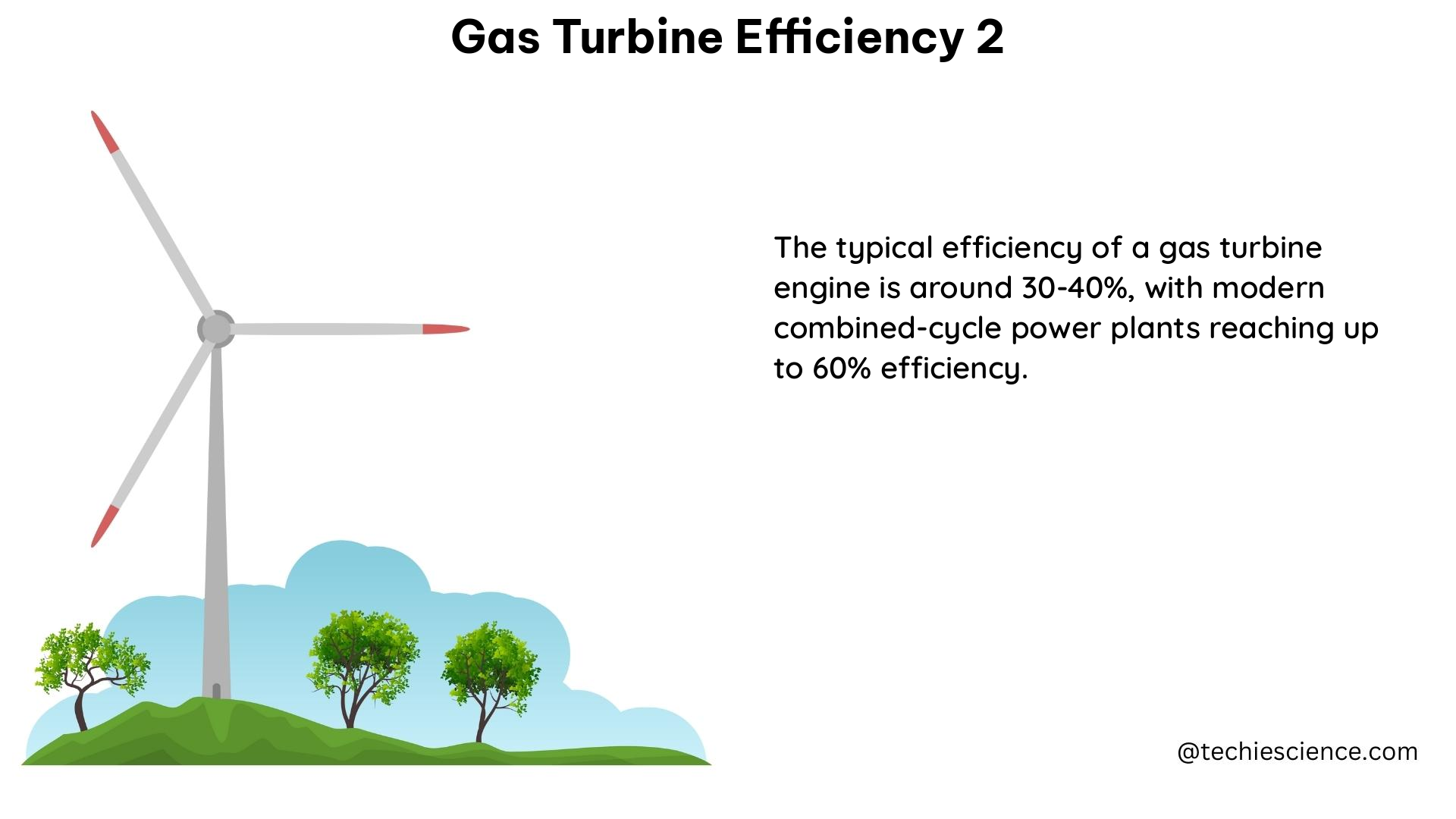Gas turbine efficiency is a critical parameter in the design and operation of gas turbines, as it directly impacts the performance, cost, and environmental impact of these systems. Understanding the factors that influence gas turbine efficiency and the techniques used to optimize it is essential for engineers, technicians, and industry professionals.
Factors Affecting Gas Turbine Efficiency
Compressor Pressure Ratio
The compressor pressure ratio is a key factor in determining the efficiency of a gas turbine. Higher pressure ratios generally lead to higher thermal efficiencies, but they also increase the complexity and cost of the system. Typical compressor pressure ratios for modern gas turbines range from 15:1 to 30:1, with higher-end models reaching up to 45:1.
Turbine Inlet Temperature
The turbine inlet temperature (TIT) is another critical parameter that affects gas turbine efficiency. Higher TITs, which are enabled by advances in materials and cooling technologies, can significantly improve thermal efficiency. However, there are practical limits to how high the TIT can be, as excessive temperatures can lead to increased wear and reduced component life. Typical TITs for modern gas turbines range from 1,300°C to 1,600°C.
Compressor and Turbine Efficiencies
The efficiencies of the compressor and turbine components also play a crucial role in determining the overall efficiency of the gas turbine. Improvements in aerodynamic design, materials, and manufacturing techniques have led to compressor and turbine efficiencies in the range of 85-90% for the best-in-class models.
Combustor Pressure Loss
The pressure loss across the combustor can also impact gas turbine efficiency. Minimizing this pressure loss, through the use of advanced combustion systems and optimized flow paths, can help to improve the overall efficiency of the engine.
Improving Gas Turbine Efficiency

Advanced Materials and Cooling Techniques
The use of advanced materials, such as ceramic matrix composites (CMCs) and single-crystal superalloys, can enable higher turbine inlet temperatures and improved component durability. Additionally, advanced cooling techniques, such as impingement cooling and film cooling, can help to protect critical components from the extreme temperatures encountered in the turbine section.
Dry Low-NOx (DLN) Combustors
Dry low-NOx (DLN) combustors are a type of advanced combustion system that can improve gas turbine efficiency by more accurately controlling the combustion process. These systems use staged combustion and lean-premixed fuel-air mixtures to reduce emissions of nitrogen oxides (NOx) while also improving overall efficiency.
Aerodynamic Optimization
Optimizing the aerodynamic design of the compressor and turbine components can lead to significant improvements in efficiency. This can involve the use of computational fluid dynamics (CFD) simulations, advanced blade and vane geometries, and innovative flow path designs.
Quantifiable Data on Gas Turbine Efficiency
GE Gas Turbine Performance Characteristics
The GE Gas Turbine Performance Characteristics document provides detailed information on the performance of various GE gas turbines, including their net power output, thermal efficiency, and heat rate. For example, the MS5001 gas turbine has a net power output of 260 MW, a thermal efficiency of 37.0%, and a heat rate of 9,740 kJ/kW h at ISO ambient conditions and a compressor pressure ratio of 16.
Practical Techniques for Modeling Gas Turbine Engine Performance
The Practical Techniques for Modeling Gas Turbine Engine Performance document provides a detailed overview of the methods and techniques used to model and analyze the performance of gas turbine engines. This includes equations and figures that illustrate the relationships between various engine parameters, such as mass flow, temperature, pressure, and efficiency.
Conclusion
Gas turbine efficiency is a complex and multifaceted topic, with a wide range of factors influencing the overall performance of these systems. By understanding the key parameters that affect efficiency, and the various techniques used to optimize them, engineers and industry professionals can design and operate gas turbines that are more efficient, cost-effective, and environmentally friendly. The resources and data presented in this guide provide a comprehensive overview of the state-of-the-art in gas turbine efficiency, and can serve as a valuable reference for those working in this field.
References:
- Gas Turbine – an overview | ScienceDirect Topics
- Evaluating Gas Turbine Performance Using Machine Generated Data
- GER-3567H – GE Gas Turbine Performance Characteristics
- Gas turbine efficiency and ramp rate improvement through quasi-dynamic simulations
- Practical Techniques for Modeling Gas Turbine Engine Performance

The lambdageeks.com Core SME Team is a group of experienced subject matter experts from diverse scientific and technical fields including Physics, Chemistry, Technology,Electronics & Electrical Engineering, Automotive, Mechanical Engineering. Our team collaborates to create high-quality, well-researched articles on a wide range of science and technology topics for the lambdageeks.com website.
All Our Senior SME are having more than 7 Years of experience in the respective fields . They are either Working Industry Professionals or assocaited With different Universities. Refer Our Authors Page to get to know About our Core SMEs.